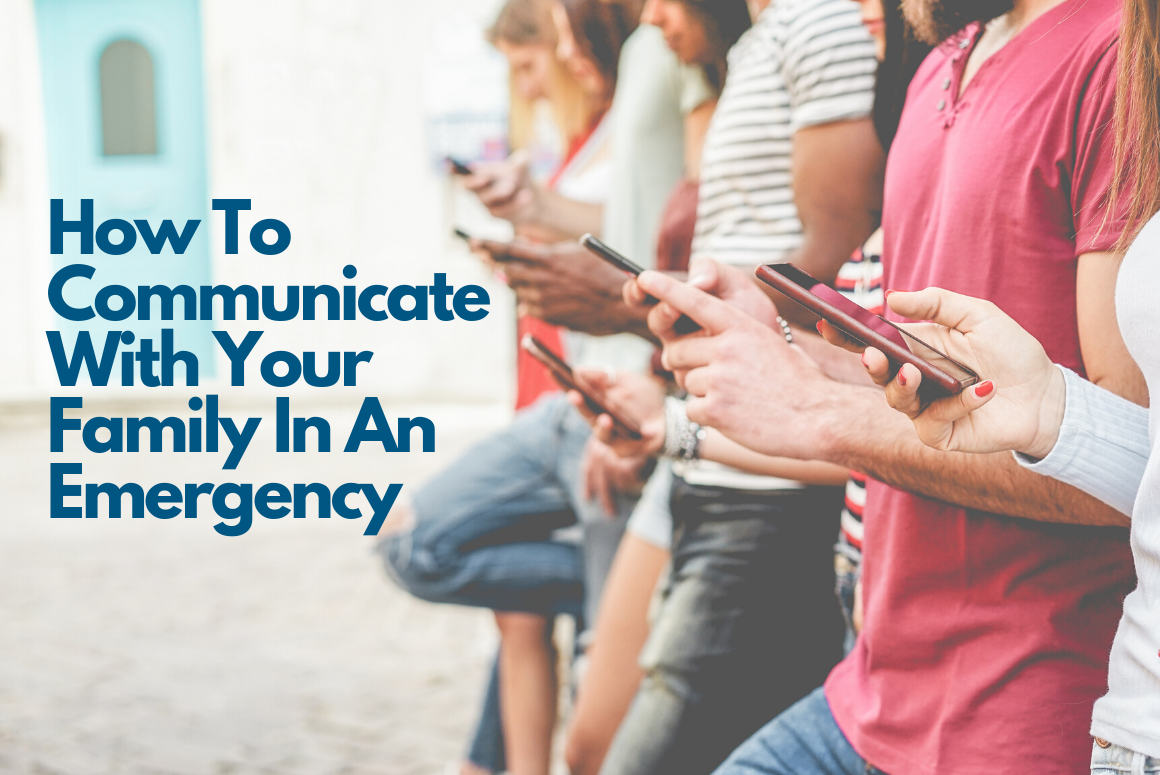A core element to our general emergency preparedness plans is a plan to communicate with family members when we’re not together. Whether you happen to be separated outside the home when a crisis occurs or you simply don’t reside with your immediate family members, knowing when and how to communicate when the time comes should be established well before you need to do so.
How To Communicate – The Internet
Did you know that, in the event of a large scale disaster, the internet is the most reliable communication channel? Widespread disasters (i.e. hurricanes, wildfires, earthquakes) can cause power disruptions or outages and impact regular phone lines so those in need rely on their mobile networks to reach emergency services.
We want to make sure that those people can reach first responders as quickly as possible, so when we need to contact our family members to check on them or to start a reunification process, consider using internet-based communication like instant messaging, email, or social media (including messaging tools).
Have conversations with family about the communication tools you will plan to use in an emergency and, if you’re unfamiliar with any of them, take the time to learn so that you’re ready for any future event (this also reduces the stress of learning a new tool under pressure). Finally, consider what your backup tool is going to be if your first choice isn’t available when you need it.
How To Communicate – Out Of Area Contacts
If for some reason, you cannot reach your loved ones through your predetermined communication channels, you can use an out of area emergency contact that is a central point for your entire family.
Why have an out of area contact? Family members or close friends who live out of the immediate area are unlikely to be impacted by the same disaster as you and in past large scale disasters, long-distance phone lines have proven to be reliable (and don’t interfere with the local emergency calling that happens). This contact becomes your family’s central point of communication to provide updates and check-in on the status of the rest of the family until communication channels are restored.
How to Communicate – Manual Methods
If you and your family live close enough to one another, you might be able to make use of communication tools like walkie talkies or hand-crank radios when all else fails. Of course, these have limited range so they’re best used if you’re within a certain distance of one another (most walkie talkies have a range from a few hundred meters to a couple of miles).
As with your internet communication tools, take the time to get the best item for your needs and make sure you know how to use it before an emergency happens. Be sure to keep these charged so they’re ready to use at a moment’s notice and make sure you have backup batteries or charging options.
How to Communicate – ePACT Network
Create a Private Personal Emergency Record (PPER)™ in ePACT so that you can store critical emergency information and connect it with friends and family to create your own personal emergency network.
If you connect your PPER to organizations that your family relies on, such as Parks & Recreation, YMCAs, schools, sports associations, or camps, then they can use the system to communicate with you and your emergency contacts across voice, email, and text messages. This is key if your children happen to be in one of those facilities when disaster strikes – when they can reach you quickly and effectively, you can be confident that you’ll know what to do the moment something happens (and the same is true for less serious emergencies, like a late bus or change in location for a program or activity).
The best way to deal with any emergency is to prepare beforehand, so take the time to connect with your family members and discuss what your emergency and communication plans look like.
Terms and Conditions
All content provided on this blog is for informational purposes only. The owner of this blog makes no representations as to the accuracy or completeness of any information on this site or found by following any link on this site. The owner will not be liable for any errors or omissions in this information nor for the availability of this information. The owner will not be liable for any losses, injuries, or damages from the display or use of this information. This policy is subject to change at any time.

